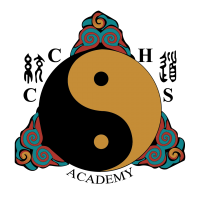Advanced Cupping for Orthopedic Conditions  Dr. Anthony Von der Muhll, L.Ac., DAOM, DNBAO, FAIPM
Dr. Anthony Von der Muhll, L.Ac., DAOM, DNBAO, FAIPM
Introduction to Acupuncture Physical Medicine
The Academy of Chinese Culture and Health Science
Category 1 CA CEU’s: 8 CEUs (pending)
Instructor: Dr. Anthony Von der Muhll, L.Ac., DAOM, DNBAO, FAIPM
Dr. Anthony Von der Muhll specializes in sports, orthopedic and neuro-musculoskeletal injuries and pain conditions. He became Licensed as an Acupuncturist in 2003, and was the first graduate of the Five Branches University’s’ Integrative Sports Medicine program. He has served as a Clinical Instructor and Associate Professor at the Five Branches since 2005, and as an Instructor in the Doctorate of Acupuncture and Oriental Medicine Program of the Academy of Chinese Culture and Health Sciences beginning in 2017. He is also a Diplomate of the National Board of Acupuncture Orthopedics, a Fellow of the American Academy of Pain Management, and certified as a Personal Trainer through the American College of Sports Medicine. He is also one of the few traditionally-trained acupuncturists who has also become certified as a Myofascial Trigger Point Therapist (dry needling) through Myopain Seminars. He has 20 years of clinical experience as a sports massage therapist, physical therapy aide, athletic training assistant, and licensed acupuncturist in multi-disciplinary clinics, including SpineMed Associates and the PRIME Pain Medicine Institute. He has also served as an Expert Witness for the California Acupuncture Board (CAB) and in civil malpractice litigation.
December 13, 2021-December 13, 2021 2:00 PM-5:00 PM
3 Category 1 CAB units available
Type: Prerecorded Lecture – Distance Education CEU to be granted
Description:
Beyond “set and forget” static cups, advanced orthopedic cupping can provide more powerful therapeutic effects for neuro-musculoskeletal pain and disability, including:
• Precisely and actively engaging, stretching and mobilizing the underlying muscles, tendons, fascia and joints
• Reducing painful trigger points and adhesions
• Triggering muscle relaxation reflexes
• Draining areas of inflammation and lymphatic congestion (heat, qi and blood stagnation, and damp-phlegm accumulations)
• Drawing fresh blood through tight, adhered or restricted muscles, removing wastes and bringing new oxygen and nutrients to injured area
• Decreasing pain-inhibition to movement
• And restoring normal muscle-tendon strength and flexibility, and joint range-of-motion
Passive cupping
Beyond “sliding,” passive cupping employs a variety of specific mobilization techniques using both directed suction, and passive movement of the affected limbs.
Active cupping
Guiding patients through precise movements with cups in place over specific myofascial tissues combines therapeutic exercise with suction for synergistic benefits.
Passive and active cupping requires the acupuncturist to understand the optimal types and directions of myofascial tissue mobilization for specific body regions and injuries.
“Wet” cupping
involves cups applied to body regions following the use of a 7-star, lancet or 3-edged needle, in order to enhance the movement of stagnant body fluids that trap heat, dampness and phlegm (inflammation) and obstruct the inflow of new, fresh blood.
Class Topics:
Safety and standards of care
• Cautions and contraindications
• Patient education and informed consent
• Manual pump vs. fire cupping
• Risk reduction protocols and management of adverse events
• Cup disinfection and re-use
• Post-cupping protocols
Passive and active cupping: therapeutic mechanisms, indications and protocols for specific body regions
• Regional muscle hypertonicity/spasticity
• Paraspinals
• Forearm
• Shoulder girdle
• Gluteals
• Quadriceps, IT band and hamstrings
• Calves
“Wet” cupping: therapeutic mechanisms, indications and protocols for specific conditions
• Acute sprain/strain injuries
• Bursitis (shoulder, hip, knee, calcaneal)
• Adhesive capsulitis
• Tendinitis and tendinosis
• Chronic myofascial pain and blood stasis
Integrating advanced orthopedic cupping into acupuncture clinic flow
• Combining cupping with other therapies
• Billing and coding
• Documentation for malpractice defense and to support insurance billing
Course Objectives:
Cupping has unique benefits for musculo-skeletal pain that cannot be obtained any other way. Cupping decompresses and stretches myofascial tissues away from the underlying structures (instead of pushing them into bones, like massage).
